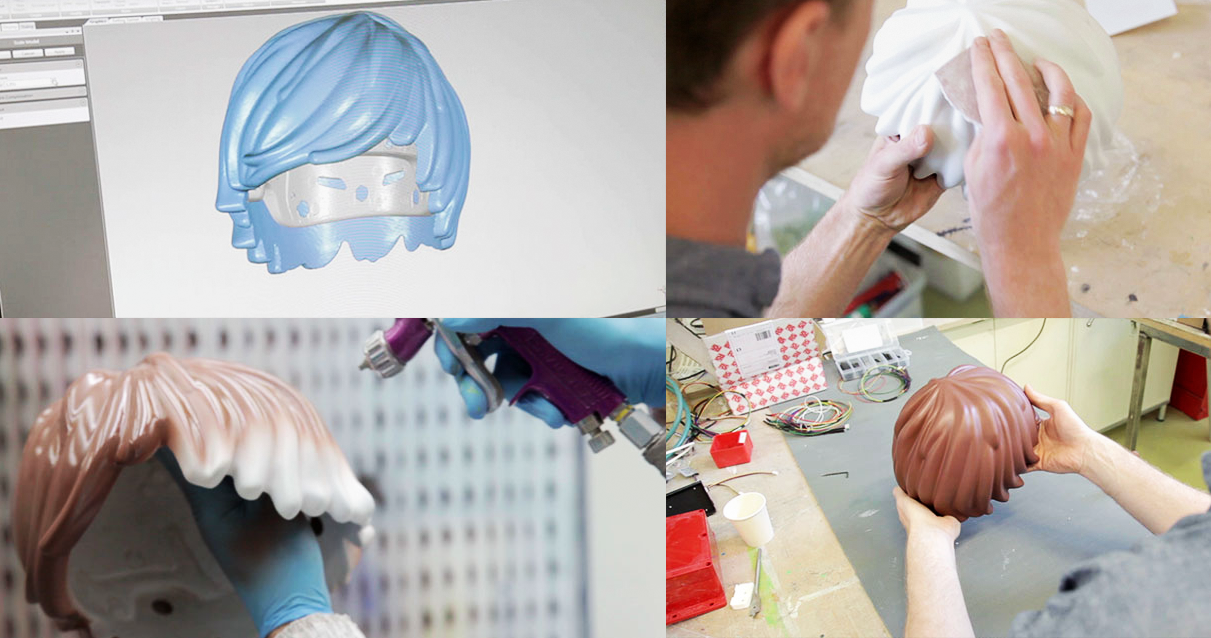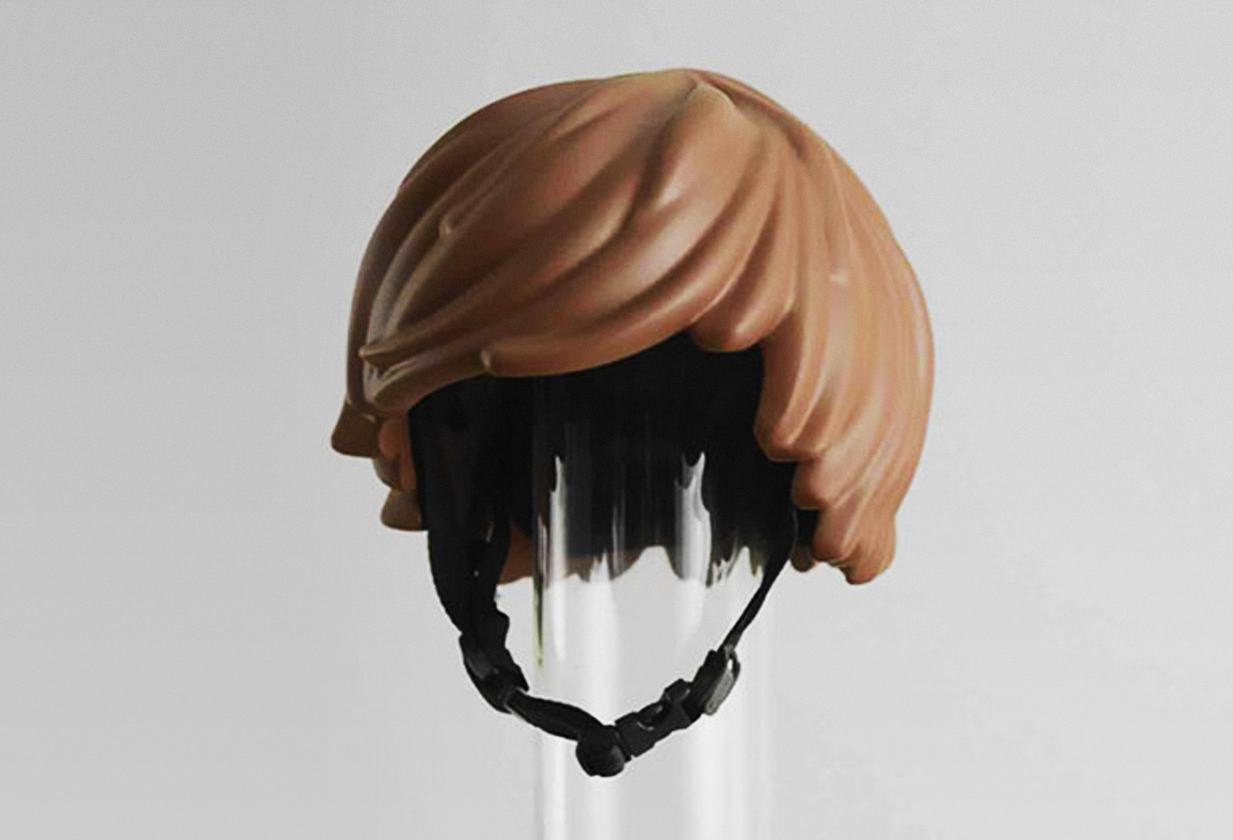
It may seem to be a ridiculous application, but in fact this “HelmetHair” illustrates a perfect application for 3D printing.
“HelmetHair” is a project by Simon Higby and Clara Prior-Knock of DDB Copenhagen, a design agency in Denmark. Evidently this design was part of Higby’s MBA thesis.
The helmet itself was created by MOEF, a Danish design company using 3D technologies. As you can see in the video below, the company used structured light 3D scanning technology to capture the 3D shape of a LEGO “hair piece”.
(Aside: I had NO IDEA how many different LEGO hair pieces exist. There are dozens! But the one selected by the design teams here seems to be a very common version.)
MOEF then 3D printed the hybrid hair-helmet design on a ZCorp Z650 powder 3D printer and painted it to match the actual LEGO hair color as close as possible.

Note that the Z650 produces stone-like objects that are entirely inflexible and will shatter if dropped, making the HelmetHair only a visual prototype – it cannot be actually used as a helmet. However, as a prototype it shows that one could in fact produce such a helmet with usable materials for actual riding.
Why do all this? It seems that they’ve hit a key idea for 3D printing:
44% of children surveyed don’t wear a helmet while riding a bike. They wanted to come up with a design that kids would want to wear without being forced.
LEGO, being a favorite of all children, was the natural place to look for inspiration. By transforming a normal bike helmet into what appears to be LEGO hair, it provides a way for the children to “become” a LEGO character.
Simon Friis, a former design student at DDB Copenhagen, now Creative at Kadaver Denmark, explains more:
This project was born from the creative minds of Simon Higby and Clara Prior-Knock. I was fortunate enough to work along side them as a design intern. It was an awesome project to be part of, and it is cool to see that it has come this far. It goes to show that if an idea is good enough, we as creative agencies, should not be afraid to go the extra mile to make it happen. Even though neither Playmobil nor Lego has yet to make the project a reality, the sheer publicity puts focus on both the issue with children’s safety in traffic, and how design agencies like MOEF changes the way advertisement agencies can pitch their projects to businesses. Now all we can do is wait and be ready.. it’s your move Playmobil or Lego Group!
What’s most fascinating to me is that this approach demonstrates perhaps a new application of 3D printing: change the SHAPE of an object to make it more useful, but keep the FUNCTION the same.
Many people are prisoners of their perceptions and the ability to change the shape of objects to overcome those barriers could be an extremely powerful paradigm in product design.
Via Behance (Hat tip to Simon Friis)


1 comment
Comments are closed.